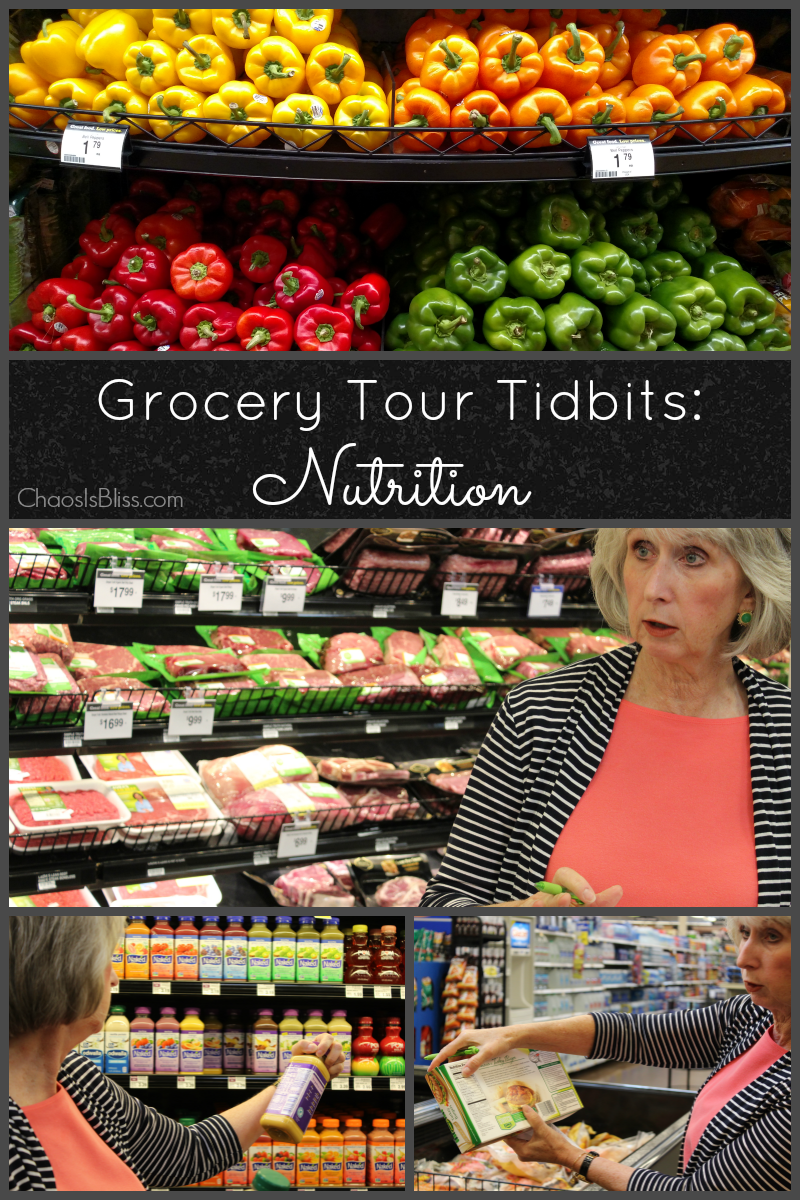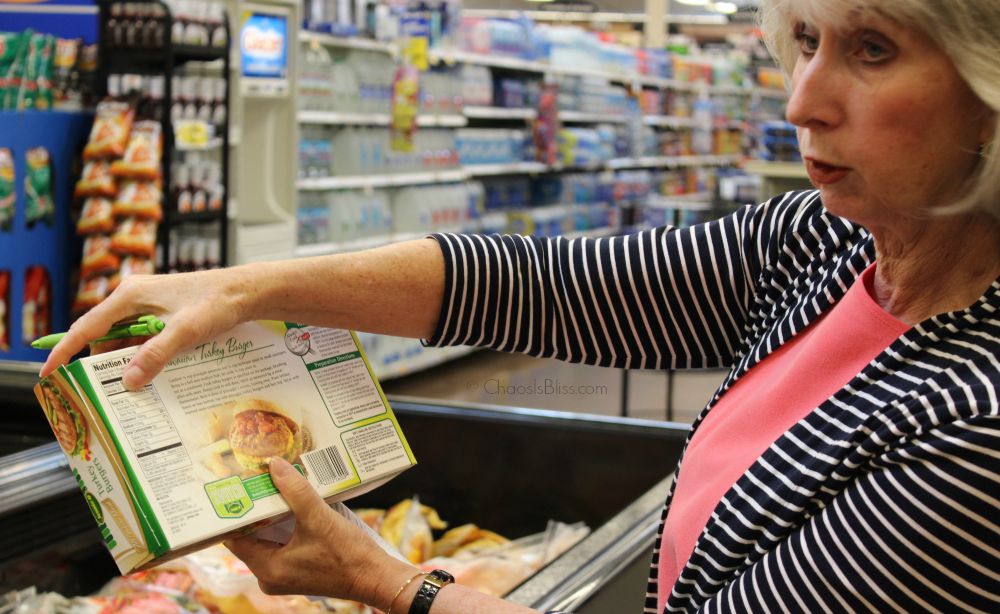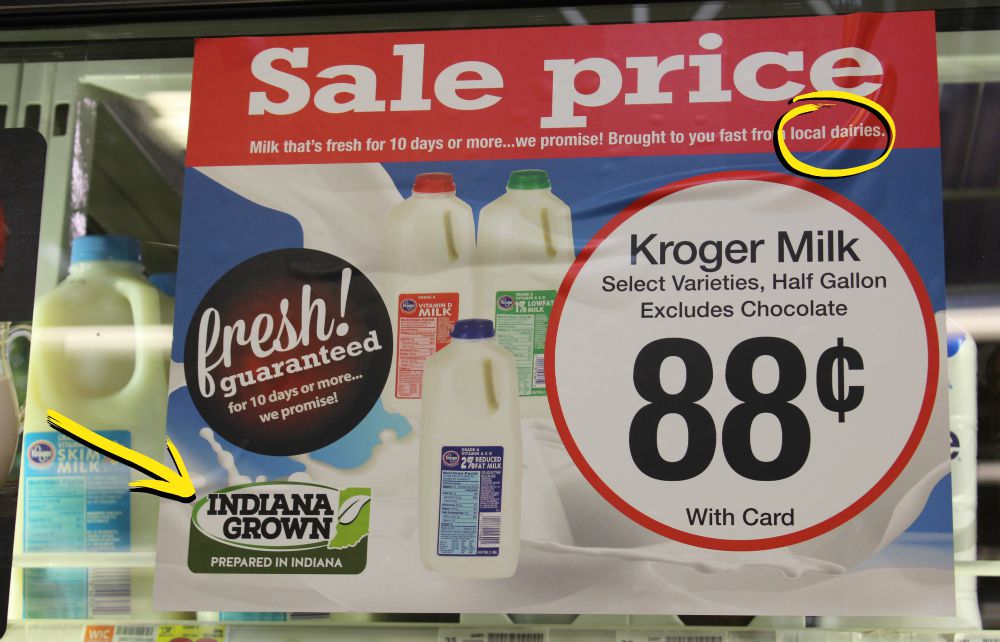 Earlier this summer I had the chance to take a tour of a Kroger store, but instead of being with a gaggle of Girl Scouts, I was with several local bloggers and a registered dietitian – who happens to be a cancer survivor. This was a specialized tour to learn about nutrition, reading nutrition labels and how to make better choices when grocery shopping.
Earlier this summer I had the chance to take a tour of a Kroger store, but instead of being with a gaggle of Girl Scouts, I was with several local bloggers and a registered dietitian – who happens to be a cancer survivor. This was a specialized tour to learn about nutrition, reading nutrition labels and how to make better choices when grocery shopping.
Martha Rardin, Director of Nutrition and Dietetics with Hendricks Regional Health, was our tour guide for the visit. Just two years ago Martha received the Lifetime Achievement Award from the Indiana Dietetic Association. She knows her stuff!

Martha shared with us not only the nuts and bolts of how to read a nutrition label, but things the average consumer doesn’t typically consider:
- Pre-packaged meats may have added ingredients such as sodium and fillers.
- You’ll pay more for convenience. Whether buying fresh or frozen meat, pre-made patties will cost higher per pound than purchasing the meat and making your own patties.
- Serving sizes can throw you off! If the calorie count looks quite low you might think it’s a good choice – until you see the serving size is the size of your thumbnail!
- Sugar should not be the first or second ingredient. This is added sugar, not naturally occurring.
You’ve heard time and time again that it’s healthiest to shop the perimeter of grocery stores – fresh produce, meat and dairy. That’s true – but some packaged items are perfectly fine, in moderation. Again, check those labels!
Look for:
- Foods with 5 or fewer ingredients on the nutrition label.
- Whole wheat flour as the first ingredient on breads. You’re starting to see more options available in whole grains, such as crackers and pasta.
- At least 3g of fiber on any product that contains grains.
Did you notice I haven’t mentioned organics? If your food budget allows, it’s certainly fine to purchase organics, especially produce. But for many, the high cost of organics is prohibitive. Buying local is a great way to ensure fewer – or no – pesticides on your produce, because there’s a shorter distance to travel to get it to your store shelves. Make sure to rinse well or use a produce wash to clean away any dirt, wax or pesticides.

One of the most nutritious foods you can put into your body is dairy. There is a wealth of information available at Winners Drink Milk, and specific tips from this Q&A with a dietitian, including nutrition in schools.
You’ve probably started to hear and see Kroger commercials promoting Indiana Grown. Kroger sources their milk from local dairy farms, ensuring a fresh guarantee of 10 days or longer.
As I have been incorporating more recipes into Chaos Is Bliss, I’m excited to be working with Indiana’s Family of Farmers and Indiana Dairy to create recipes using healthier, lighter substitutions for dairy. We’ll still keep the rich nutrients, just cut a little of the fat and calories. You’ll find all of my recipes here, and also here.
Do you have a tip to share about grocery shopping with nutrition in mind? Share in a comment!
You may also enjoy:
- Bourbon Brown Sugar Pork Loin Roast (and my trip to the hog farm!)
- Where does my milk come from?
- Skinny Pumpkin Dip recipe
This post was sponsored by Indiana’s Family of Farmers, but all words are 100% my own. See my disclosure policy for more info.


 I love sharing ways to spend less, so families can do more! My passions are cooking, late night TV and being amused by my witty husband and three kids.
I love sharing ways to spend less, so families can do more! My passions are cooking, late night TV and being amused by my witty husband and three kids.
Leave a Reply